The fast-growing and competitive injection molding industry is worth hundreds of billions of dollars, prompting manufacturers to seek ever more efficient and cost-cutting methods to stay ahead. 3D printing, also called additive manufacturing, helps manufacturers make better molds and tools for injection molding faster and cheaper than traditional processes. Let’s take a look at how and why.
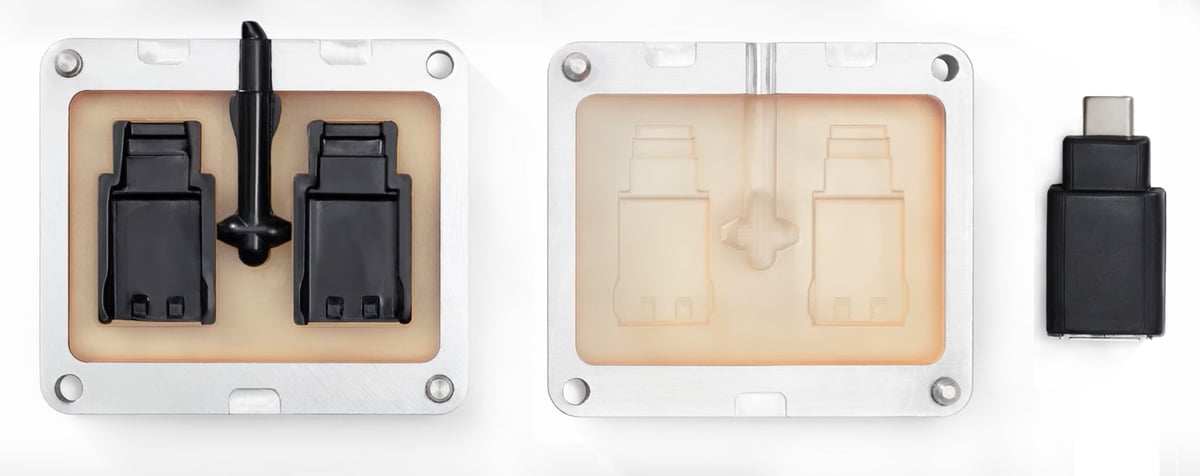
But 3D printing can also be used in the injection molding process. The molds themselves, which are the most expansive part of the process, can be 3D printed in either heat-resistant plastic, metal, or ceramic.
Here, we explore how and why companies use 3D printing to make better tooling for traditional manufacturing, such as molds, dies, and patterns, which are then used in traditional manufacturing processes to produce prototypes and final parts. It’s a growing and complimentary use of 3D printing alongside conventional manufacturing.
Why 3D Print Molds?

3D printers have been shaking up the mold-making industry for years by producing fast and affordable plastic molds and unique metal molds that enable complex design, mass customization, and accelerate production times.
Still, mold-making today is usually a machining process. A digital 3D model of the final product is used to create a digital mold design using software for this specific task, which includes determining the number of cavities, gate locations, and runner systems required in the injection molding process.
The mold components are then machined using computer-controlled equipment such as CNC mills and lathes that follow the paths set out in the digital design. Skilled toolmakers may take the rough CNC machined part and put it through a series of ever-finer types of machining to the final polishing for surface quality. It’s a multi-step process requiring several pieces of equipment and machinists, which could take days or weeks.
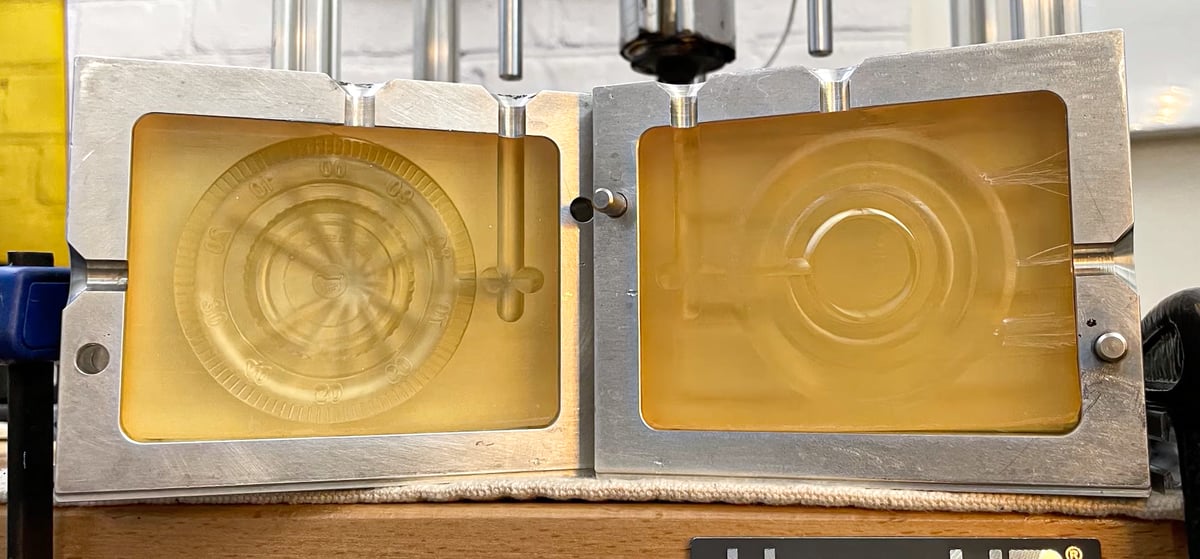
In this guide, we dive deep into both plastic and metal mold making since they address different needs and have different advantages and drawbacks.
3D Printed Plastic Molds Pros & Cons
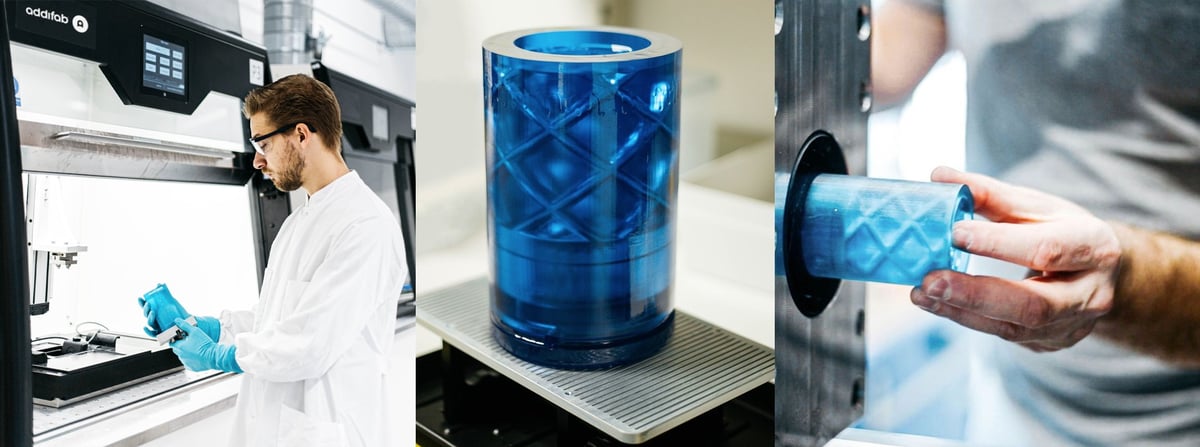
Plastic (or polymer) 3D printers, along with tough and temperature-resistant materials, enable companies to make their own injection molds in-house or order them quickly from a service provider. Molds directly from the 3D printer can be used for low volumes of parts (up to 100 or up to 10,000+, depending on the material) and can cost up to 90% less than metal molds.
3D printing in plastic is the mold-making method of choice in situations where short lead times and low costs are critical. Here we’re talking about not only 3D printing a mold to get quick prototypes, but 3D printing a prototype of a mold that you may then machine in metal. This enables companies to test and iterate faster and then more confidently move to conventional tooling for mass production.
For example, take a look at how blow molds are developed at PepsiCo. Creating conventional metal mold tooling for bottle blow molding at PepsiCo’s R&D campus in Valhalla, N.Y., used to mean up to four weeks of waiting and thousands of dollars in costs, according to Max Rodriguez, senior manager of global packaging R&D, advanced engineering and design, at PepsiCo’s research center.
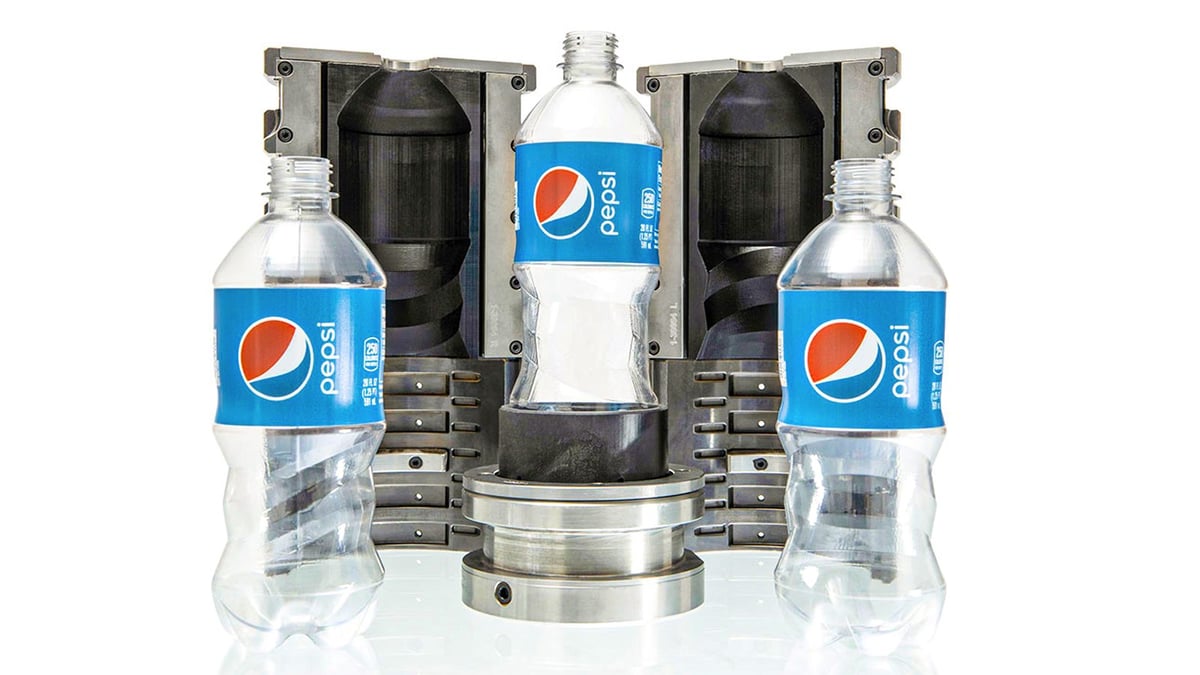
The PepsiCo 3D printing molds are used for prototype runs of about 10,000 bottles. For mass production of millions of bottles a year, Rodriguez still uses metal tooling, but “metal 3D printing blow molds are a work in progress.”
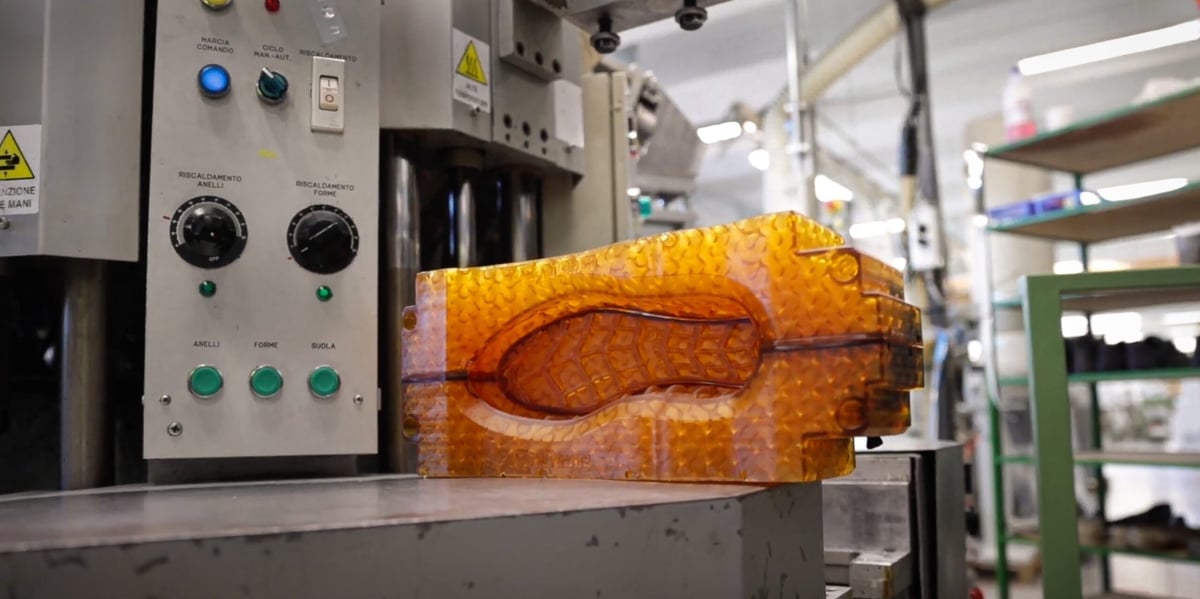
At Grisport, the Italian maker of high-end walking and safety footwear, engineers say their 3D printed shoe mold matches the performance of an aluminum mold with the benefit of lower cost and faster production.
“3D printing is going to change fundamentally the way we bring models and products to the market,” says Giovanni Grigolato, the company’s head of R&D.
Grisport is working toward replacing its expensive aluminum injection molds with in-house 3D printed ones that produce the same result at a tenth of the cost and 50-times faster. The company uses a Photocentric Liquid Crystal (LC) Magna, a large format resin 3D printer, and a HighTemp DL401 material. Grisport says it no longer has to worry about producing a shoe design that will generate a minimum sales quantity to justify the €5,000 ($5,500) cost of producing an aluminum mold. At around €500 per 3D printed mold, the company can bring to market more designs. It also opens up the opportunity for producing limited-edition and custom products.
Prototype Molds for Prototype Products
Relying on 3D printing to turn around mold tooling fast, medical device manufacturer Cogmedix 3D injection molded prototype products that their client could use for compliance and testing. The parts needed to not only meet their rigorous standards for quality and tolerances but also be made using the final production material and process, in this case, injection molding, for FDA product validation and sterilization testing.
Cogmedix outsourced the 3D printed injection mold prototype to the Mass.-based design and engineering firm Empire Group, which used the Fortify Flux One 3D printer with a proprietary ceramic-fiber reinforced resin.
Injection molding is an approved manufacturing process for many regulated products, such as children’s toys and medical devices, whereas 3D printing may not be.
Producing prototypes in the same design and material as the final product vastly improves and accelerates the prototype testing process. One start-up company specializing in 3D printing molds for injection molding is Belgium-based Addifab. It offers a patent-pending resin material for 3D printing molds that can withstand injection pressure of up to 2500 bar and a melt temperature of 450 °C, then the mold completely dissolves away in an alkaline-water solution after 12 to 48 hours.
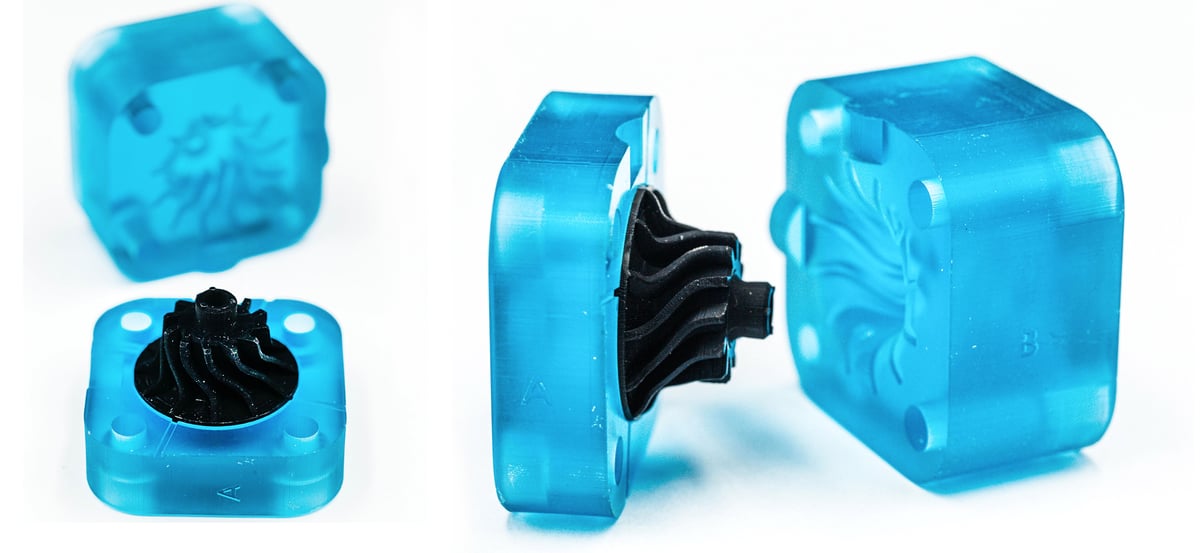
Wilson Sporting Goods recently used the Addifab resins on their large format Nexa3D NXE 400 printers to produce several versions of injection molds in one batch for a new baseball bat handle.
“What once took our machine shop months to build is now taking our team only days to turn around these design iterations,” says Glen Mason, manager of advanced innovation and industrialization at Wilson Sporting Goods division DeMarini. “This helps us to greatly improve our time-to-market, allowing us to be quick and nimble with our design decision-making process.”
Economically Viable Short-Run Injection Molding
With conventional mold-making, the most considerable cost of manufacturing with injection molding is creating the mold. Only when a large volume of products are manufactured and sold can the cost of mold production be recouped. If a product has a short lifecycle or low demand, investing in a machined mold may not make financial sense, so products may not be made.
With faster and cheaper 3D printed molds, manufacturers can broaden their product offering to customized or low-volume jobs that weren’t economically feasible before. 3D printed molds for final short-run production give manufacturers the flexibility to quickly and easily produce custom parts and respond faster to customer demands for new products.

The biggest cost savings in molds is realized when a metal mold can be replaced with a plastic mold. Case in point: Multiplus, an injection molding company in China. It recently experienced surging demand for small batch production, which traditionally has a lower profit margin due to the complexity and cost of manufacturing the hard tooling.
“Although it is not the majority of what we do now, small batch production requests are becoming more common,” says Kevin Li, CEO of Multiplus. “Some are for design and functional validation, but more are becoming end-use. This makes sense because more and more companies want to test the market.”
Multiplus turned to 3D printing to explore materials suitable to produce cheaper plastic molds for smaller orders faster, and found Formlabs 3D printers with the company’s glass-filled resin, Rigid 10K Resin, was a perfect fit with their Babyplast industrial injection molding machines.
After designing the mold, Multiplus could print and post-process the mold in one day, assemble the molds in half an hour, and start injection molding. The company limits each mold to roughly 100 shots of use but 3D prints multiples of molds at once for larger order quantities.

Plastic 3D Printed Mold Pros & Cons
Materials & Tecnology for Plastic Molds
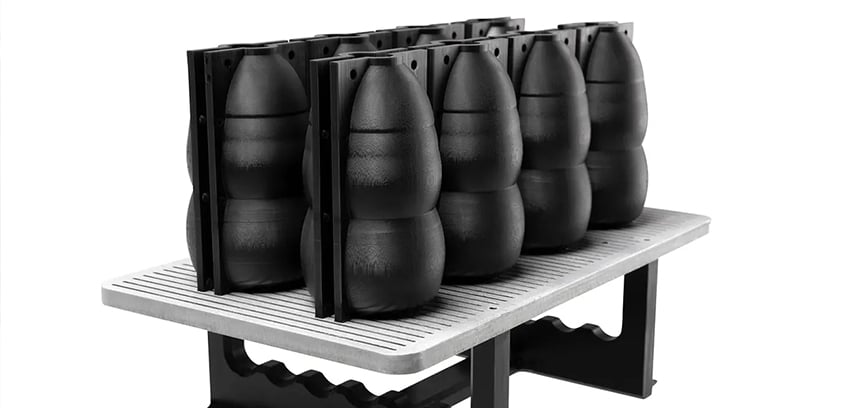
There are a wide range of plastics used in 3D printing that can withstand the pressure and temperatures of injection molding machines. Your choice of material depends on the melting temperature of the plastic you’ll be molding, the pressure of your injection molding machine, and the number of parts you intend to produce.
Common Plastics for 3D Printed Molds and Tooling
- ABS
- PETG
- Polypropylene (PP)
- Nylon (PA)
- Carbon Fiber Nylon
- Ultem
- Tooling resin
All of these are less durable than metal but can withstand dozens to hundreds of injection molding cycles. For volumes in the thousands of parts, metal is almost always selected over plastics.
Plastic molds generally have a lower thermal conductivity than metal molds resulting in longer cooling times for injection molded parts. 3D printing sacrificial molds out of PVA or a water-soluble resin is an up-in-coming solution for very low-volume injection molding used in research.
3D Printing Technology for Plastic Molds and Tooling
Although the most economical 3D printing solution for plastic molds and tooling is fused deposition modeling (FDM), there are visible layer lines with this method. They can be removed with sanding or chemical finishing. These molds can also be finished to tighter tolerances with machining.
Resin 3D printing – stereolithography (SLA), digital light processing (DLP) — is the more popular technology since it produces molds with a finer surface finish that needs less, if any, further processing. Another resin-based 3D printing technology, material jetting, can make molds in multiple materials and colors along with a fine surface finish. Selective laser sintering (SLS), a technology that uses powdered polymer materials and lasers, delivers molds, typically from reinforced nylon, with both surface quality and strength.
3D Printed Metal Molds Pros & Cons
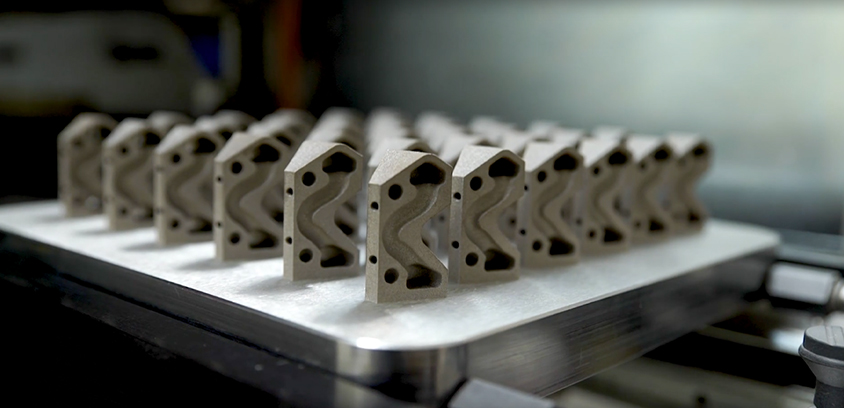
The driving factor behind the surging use of metal 3D printed molds is entirely different from the benefits of plastic 3D printed molds. In fact, metal 3D printed molds can, in certain circumstances, be more expensive and take as long to make as traditional metal molds, but they have one significant advantage that makes them better molds: conformal cooling channels.
This feature, which is only available with 3D printed molds, is igniting a revolution of sorts in the mold-making industry.
Cooling channels are essential in metal injection-molding tools so that parts can be cooled faster and uniformly. The cooling stage represents 70% – 80% of the entire cycle time, so reducing that time over the lifetime of a mold results in significant savings for manufacturers. Proper cooling also affects the dimensional accuracy, surface quality, and mechanical properties of the final product.
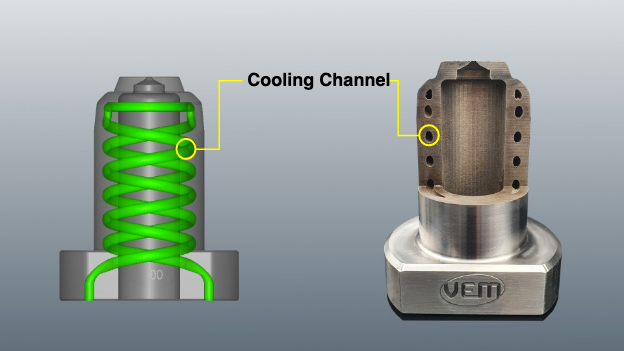
Compared to traditional processes, additive manufacturing can create curved cooling channels within a mold shaped to conform to the part’s geometry and provide cooling where needed most to improve part quality and reduce cooling times by as much as 70%.
“Metal printing brings new geometries to conformal cooling that were really just unimaginable 20 years ago, says Mike McLean, general manager of 3D printed parts at Scarlett Inc., a tooling and machining company in Grand Rapids, Mich. “ we can get cooling channels to within 2 mm of the face of an injection mold tool.”
Conformal cooling channels are added at the mold design step in CAD software, which can simulate and predict the ideal placement of channels. This design phase, however, adds time and cost to a new metal mold.
Although usually a faster process, metal 3D printing isn’t always. Depending on the complexity of the mold or tool, it can take several days or weeks to produce a final mold. The benefits of metal 3D printed tooling are typically realized in part production, not in the building of the tool itself.

Metal 3D Printed Mold Pros & Cons
Materials & Technology for Metal Molds
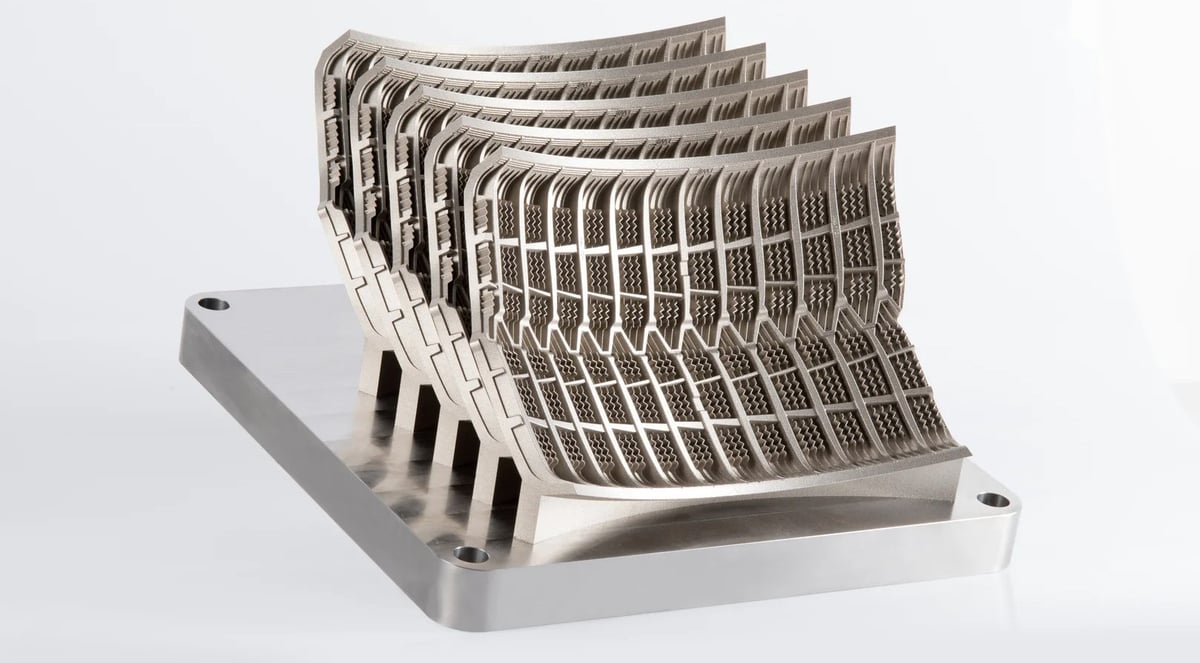
Metal 3D printing is used to create molds for final product production and prototypes. The same digital model file you would feed to the software controlling your CNC or mill in conventional mold-making can be used instead to create a 3D printing file, which is then uploaded to a 3D printer that creates the mold. That original file can also be improved upon to take advantage of the unique features of 3D printing.
The fine detail possible with metal 3D printing technology, such as laser powder bed fusion, enables manufacturers to skip several steps in the conventional mold-making process and eliminate the need for skilled machinists.
Yet, despite the fine detail achievable with 3D printing, additional machining is still common. In fact, at Protiq, a 3D printing service bureau that makes both polymer and metal tooling, some customers opt to have blank metal molds made, says Johannes Lohn, the company’s head of development, marketing, and sales.
“We have customers that operate injection molding services and look to us for contract manufacturing of 3D printed blanks since they want to do the finishing themselves,” says Lohn. Protiq uses laser powder bed fusion to manufacture molds in tool steel 1.2709, a material the company developed with Nordic Metals. The material is soft after printing and can be easily finished by CNC.
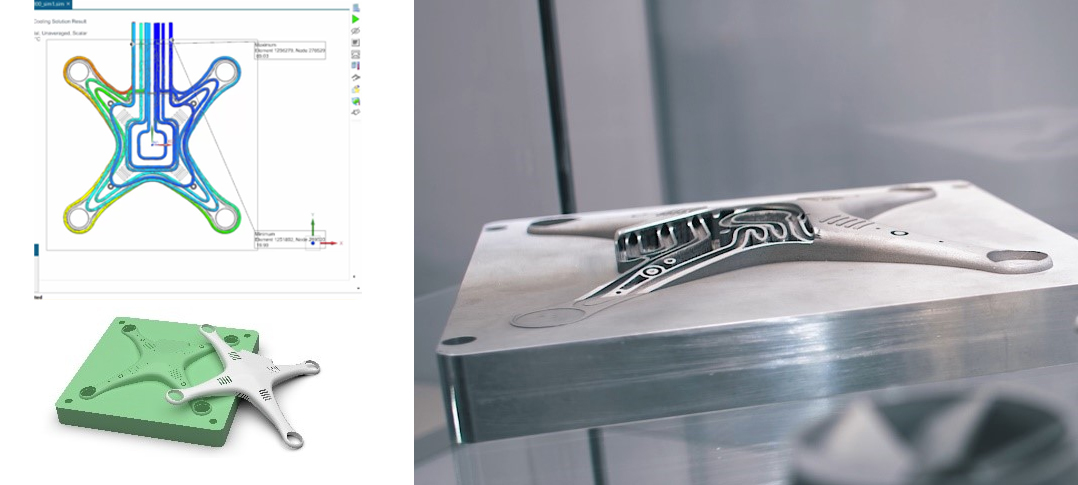
Another 3D printing technology on the horizon is called direct energy deposition (DED). This method enables metal molds in multiple metal materials. For example, a stainless steel top layer can be applied on a pure copper substrate to combine high thermal conductivity with wear resistance, properties needed in injection molding tools.
Because metal 3D printed parts often need additional machining, there’s a growing range of hybrid machines on the market that incorporate a 3D printer and a CNC machine in one using the same software.
Along these lines, 3D printer start-up Mantle 3D is singularly focused on mold and tool making. The company’s TrueShape machine first 3D prints a metal mold using an extrudable slurry of tool steel. Next, the embedded CNC machine finished the mold to tight tolerances and then sinters it in its high-temperature furnace.

Another interesting start-up riding the wave of 3D printing for injection molds is a New Zealand company called Foundry Lab. It’s foundry-in-a-box solution is designed to appeal to manufacturers who need low-volume or unique metal parts cast quickly and with a low financial and energy impact. This really clever idea for additive manufacturing works like this: a digital file of a mold is created and fed to the side of the printer that does ceramic binder jetting (a type of 3D printing). Once this mold is 3D printed and post-processed in a special microwave, you insert a Foundry Lab metal slug (proprietary zinc or aluminum, with other metals on the way) and put it back in the microwave, where the metal is melted into the mold. “No need to pour hot metal or touch metal powders,” the company says.
Common Metals for 3D Printed Molds and Tooling
- Stainless Steels
- Tool Steels
Besides metal, molds can be directly 3D printed in a wide range of ceramics, sands, and silicone. We cover large-scale sand casting, especially popular with automakers like GM and Tesla, in this separate article.
3D Printing for Vacuum Forming Molds

Desktop 3D printing along with desktop vacuum and pressure forming machines, such as Mayku and Vaquform, are vastly accelerating product and packaging prototype development. For industrial vacuum form making, 3D printed mold cores enable greater flexibility and customization opportunities.
Unlike in injection molding, where you can directly 3D print the mold, for vacuum casting, the mold is in the basic shape of the final product.
The benefits of 3D printing these mold-making shapes are speed, cost, material savings over traditional machining plastic, metal, or wood, especially when 3D printing in-house. Plus, there the opportunity for greater geometric complexities.

Faster turnaround and lower costs are major incentives when it comes to adopting a new way to create molds for vacuum forming.
With heat-resistant materials, such as carbon fiber nylon, you can 3D print molds for vacuum forming that have lattice infills instead of being solid, which produces various effects and saves on materials, plus there’s no waste since 3D printing is not a subtractive process. 3D printers can produce large parts or several small parts in a single build job.
Depending on your application, post-processing, and sanding are necessary to achieve a smooth service.
Have Your Molds 3D Printed
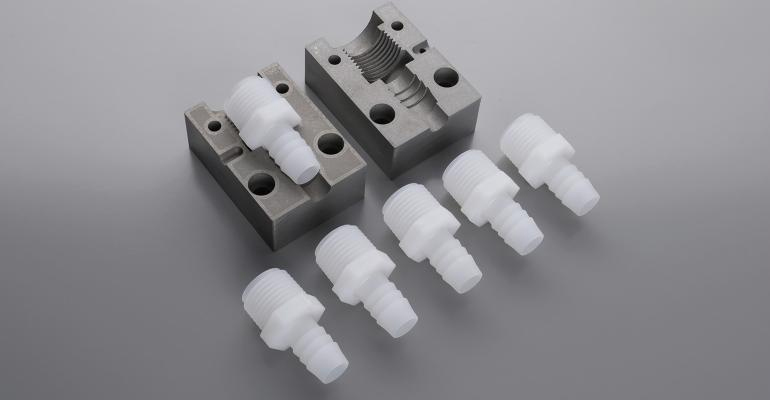
If you’re not ready to invest in your own polymer or metal 3D printers, injection molds and tooling is still within reach at a wide variety of on-demand 3D printing services. You can choose to partner with a service in the design and production of your mold or simply upload a digital file. Many of these services offer several 3D printing technologies alongside conventional machining and can advise you on the best method or methods to achieve the mold you require in the fastest amount of time.
Craftcloud by All3DP, for example, just launched a specialized casting and molding service that’s ideal for a range of applications. Whether you’re looking for detailed plastic molds for product prototypes, intricate metal casts for automotive parts, or custom components for product design, Craftcloud can advise you on the best-fitting solution.
In addition to the top services we detail in our guide below, the aforementioned Addifab also offers its dissolvable resin 3D printed injection molding as a service.
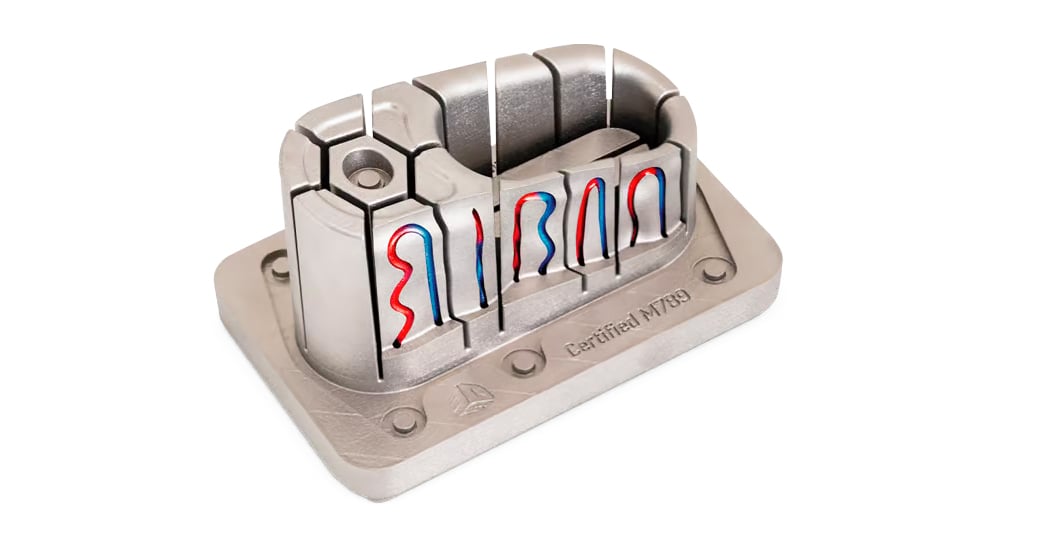
License: The text of "3D Printing Injection Molds – The Ultimate Guide" by All3DP Pro is licensed under a Creative Commons Attribution 4.0 International License.

